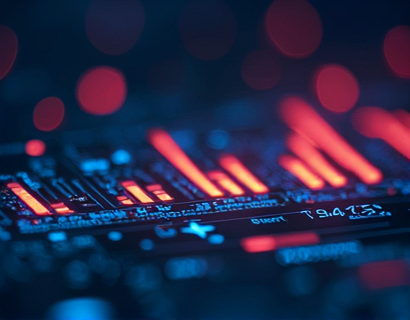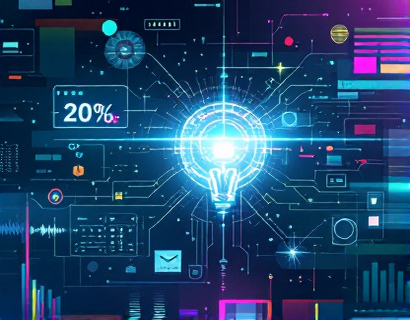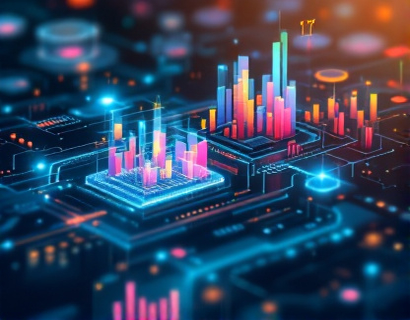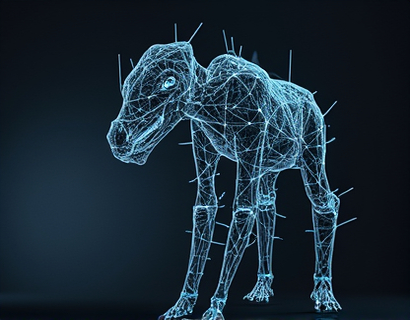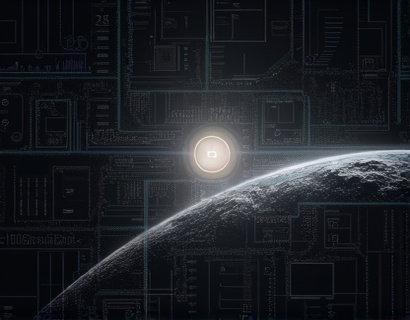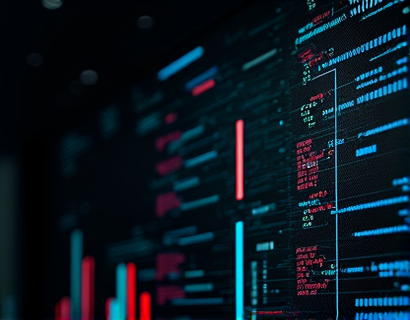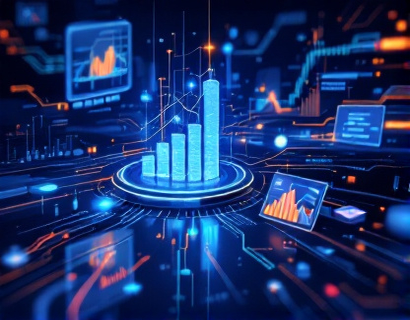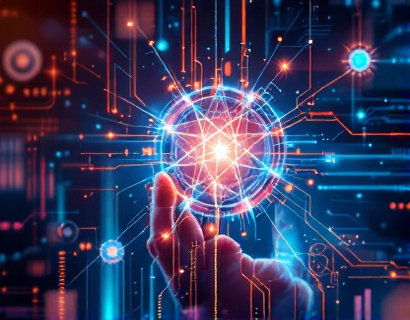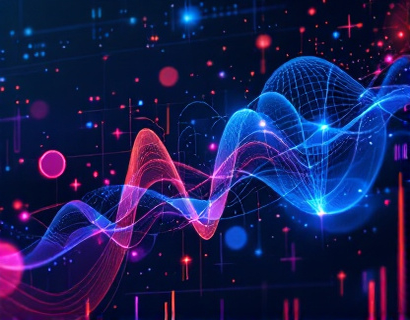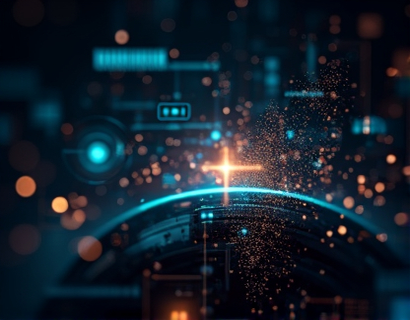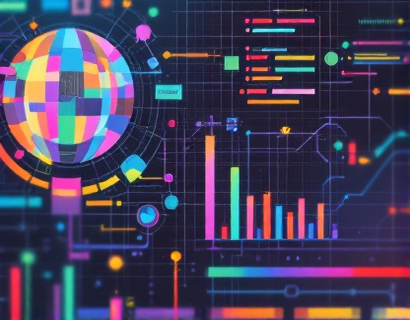AI and Crypto: Pioneering Digital Transformation with Blockchain and Machine Learning
The intersection of artificial intelligence (AI) and cryptocurrency is giving rise to a new era of digital transformation, powered by blockchain technology and machine learning. This convergence is not just a technological curiosity but a fundamental shift in how we interact with digital services and applications. The synergy between AI and blockchain is creating innovative solutions that enhance user experiences, improve security, and open up new possibilities for businesses and individuals alike.
Blockchain technology, known for its role in cryptocurrencies, offers a decentralized and transparent ledger system that ensures data integrity and security. When combined with AI, which excels in pattern recognition, predictive analytics, and automation, the potential for transformative applications becomes immense. This article delves into the ways AI and blockchain are redefining the app and service landscape, focusing on the emergence of BlockchainAI and its implications for the future of digital experiences.
Understanding BlockchainAI
BlockchainAI represents the fusion of blockchain's immutable and transparent nature with AI's intelligent and adaptive capabilities. This combination leverages the strengths of both technologies to create systems that are not only secure and trustworthy but also capable of learning and evolving over time. The result is a new generation of applications that can operate with minimal human intervention, while maintaining the highest standards of data integrity and user privacy.
The core idea behind BlockchainAI is to build decentralized applications (dApps) that use AI algorithms to process and analyze data stored on a blockchain. This approach ensures that the data remains tamper-proof and accessible to all participants in the network, while AI can derive insights, make predictions, and automate decision-making processes. The decentralized aspect of blockchain ensures that no single entity has control over the data or the AI models, reducing the risk of bias and enhancing trust among users.
Enhanced Security and Trust
One of the most significant advantages of combining AI and blockchain is the enhanced security and trust they provide. Blockchain's inherent properties, such as immutability and transparency, make it an ideal platform for storing and managing sensitive data. AI can further bolster security by detecting and mitigating potential threats in real-time. For instance, machine learning algorithms can analyze patterns in transaction data to identify anomalies that may indicate fraudulent activity.
Smart contracts, self-executing contracts with the terms directly written into code, can be enhanced with AI to automate complex processes while ensuring compliance with predefined rules. AI can help in drafting and optimizing smart contracts, reducing the risk of errors and loopholes. This synergy not only streamlines operations but also builds a higher level of trust among users who can verify the integrity of the system through blockchain's transparent ledger.
Improved User Experiences
The integration of AI and blockchain is not just about security; it's also about creating superior user experiences. AI-driven interfaces can adapt to individual user preferences and behaviors, providing personalized recommendations and services. For example, a blockchain-based platform for content creation could use AI to curate and recommend content based on a user's past interactions and preferences, enhancing engagement and satisfaction.
Moreover, AI can optimize the user interface and user experience (UI/UX) of blockchain applications. By analyzing user interactions and feedback, AI can suggest improvements and automate UI adjustments to ensure a seamless and intuitive experience. This level of personalization and adaptability is particularly valuable in the realm of financial services, where users expect quick, efficient, and tailored solutions.
Efficient and Scalable Solutions
Scalability is a critical challenge for blockchain technology, as many existing blockchain networks struggle with high transaction fees and slow processing times. AI can play a pivotal role in addressing these issues by optimizing network performance and resource allocation. Machine learning algorithms can predict network congestion and adjust parameters in real-time to maintain optimal performance.
Additionally, AI can facilitate the development of more efficient consensus mechanisms, which are essential for the scalability of blockchain networks. For instance, AI can help in designing and implementing hybrid consensus models that combine the benefits of different algorithms, such as Proof of Work and Proof of Stake, to achieve faster transaction times and lower energy consumption.
Innovative Business Models
The convergence of AI and blockchain is giving birth to new business models that were previously unimaginable. One such model is the tokenized economy, where digital tokens represent assets, services, or utility within a blockchain ecosystem. AI can enhance these tokenized systems by dynamically adjusting token values based on market demand, user behavior, and other relevant factors. This creates a more fluid and responsive economic system that can adapt to changing conditions in real-time.
Another innovative approach is the use of AI-driven marketplaces on blockchain platforms. These marketplaces can leverage AI to match buyers and sellers more efficiently, optimize pricing, and ensure fair transactions. For example, a decentralized autonomous organization (DAO) could use AI to manage its operations, from governance to resource allocation, creating a truly decentralized and autonomous entity.
Challenges and Considerations
While the potential of AI and blockchain is vast, there are several challenges and considerations that need to be addressed. One of the primary concerns is the technical complexity involved in integrating these technologies. Developers must have a deep understanding of both AI algorithms and blockchain mechanics to create robust and efficient systems. This requires a skilled workforce and significant investment in research and development.
Another challenge is the regulatory landscape. As AI and blockchain continue to evolve, regulatory bodies are still grappling with how to govern these technologies. Ensuring compliance with existing laws while advocating for new regulations that support innovation is a delicate balance. Organizations must stay informed about regulatory changes and work closely with legal experts to navigate the complex legal environment.
Privacy is also a critical issue. While blockchain's transparency is a strength, it can also expose sensitive information. AI can help mitigate this by implementing advanced encryption techniques and zero-knowledge proofs, which allow for verification without revealing the underlying data. However, the implementation of these privacy-preserving techniques requires careful design and testing to ensure they are effective and secure.
Future Prospects
The future of AI and blockchain is bright, with numerous applications across various industries. In finance, AI-driven blockchain platforms can revolutionize banking, insurance, and trading by providing faster, more secure, and cost-effective services. In healthcare, these technologies can enhance patient data management, drug discovery, and personalized medicine. The supply chain industry can benefit from blockchain's traceability combined with AI's predictive analytics, leading to more efficient and transparent operations.
As the technology matures, we can expect to see more sophisticated and user-friendly applications. The development of interoperable blockchain networks, where different blockchain systems can communicate and exchange data seamlessly, will be crucial for widespread adoption. AI will play a key role in facilitating this interoperability by managing complex data exchanges and ensuring compatibility across different platforms.
The ongoing research in areas such as quantum computing, which could potentially impact blockchain security, will also influence the evolution of AI and blockchain. Staying ahead of these developments and continuously innovating will be essential for maintaining the edge in this rapidly changing landscape.
Conclusion
The convergence of AI and blockchain is not just a technological trend but a fundamental shift in how we build and interact with digital systems. By leveraging the strengths of both technologies, we can create more secure, efficient, and user-friendly applications that redefine the digital experience. As the ecosystem continues to grow and mature, the potential for transformative solutions is immense. Embracing this convergence is key to staying relevant and competitive in the next generation of digital transformation.



